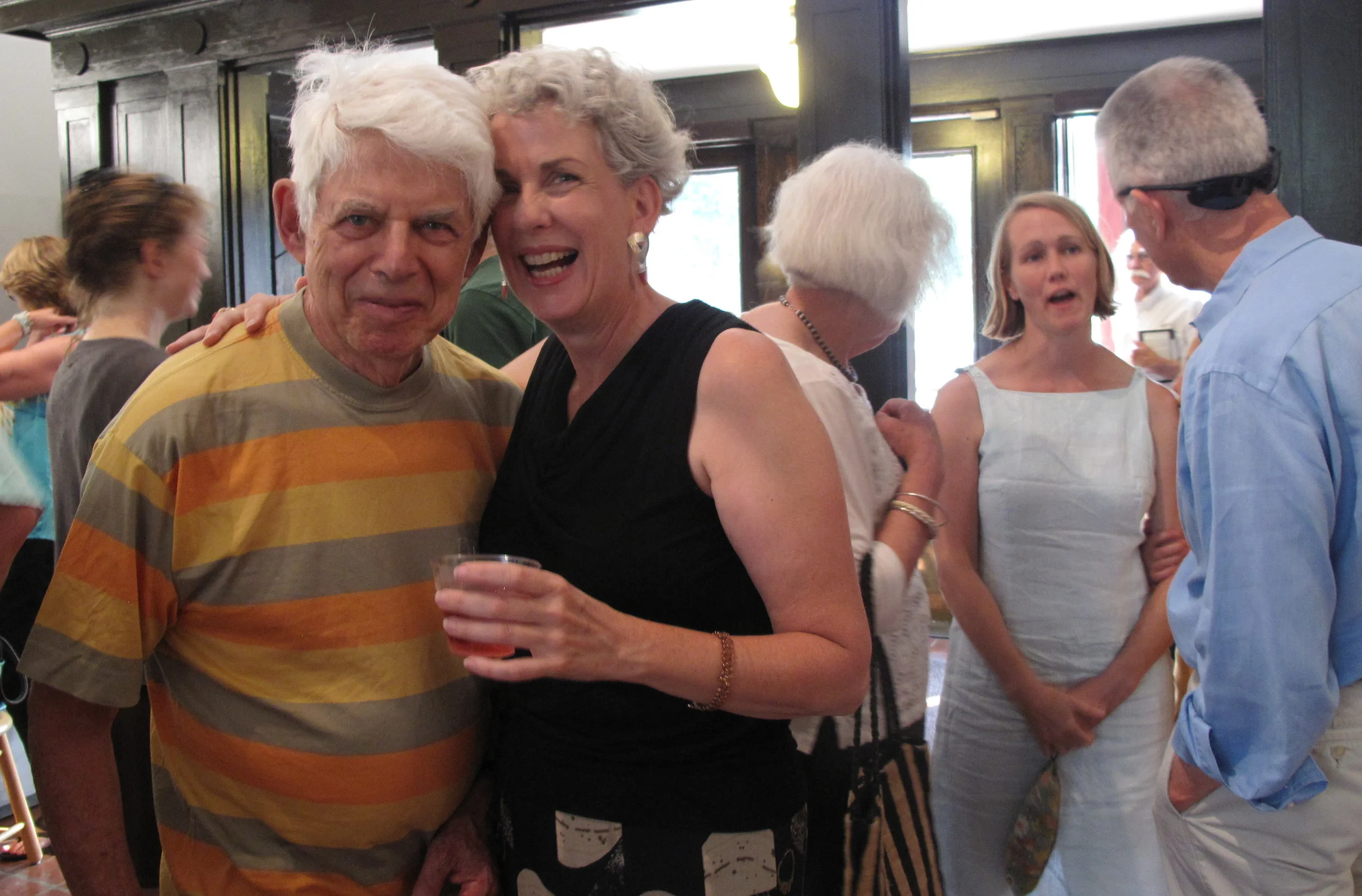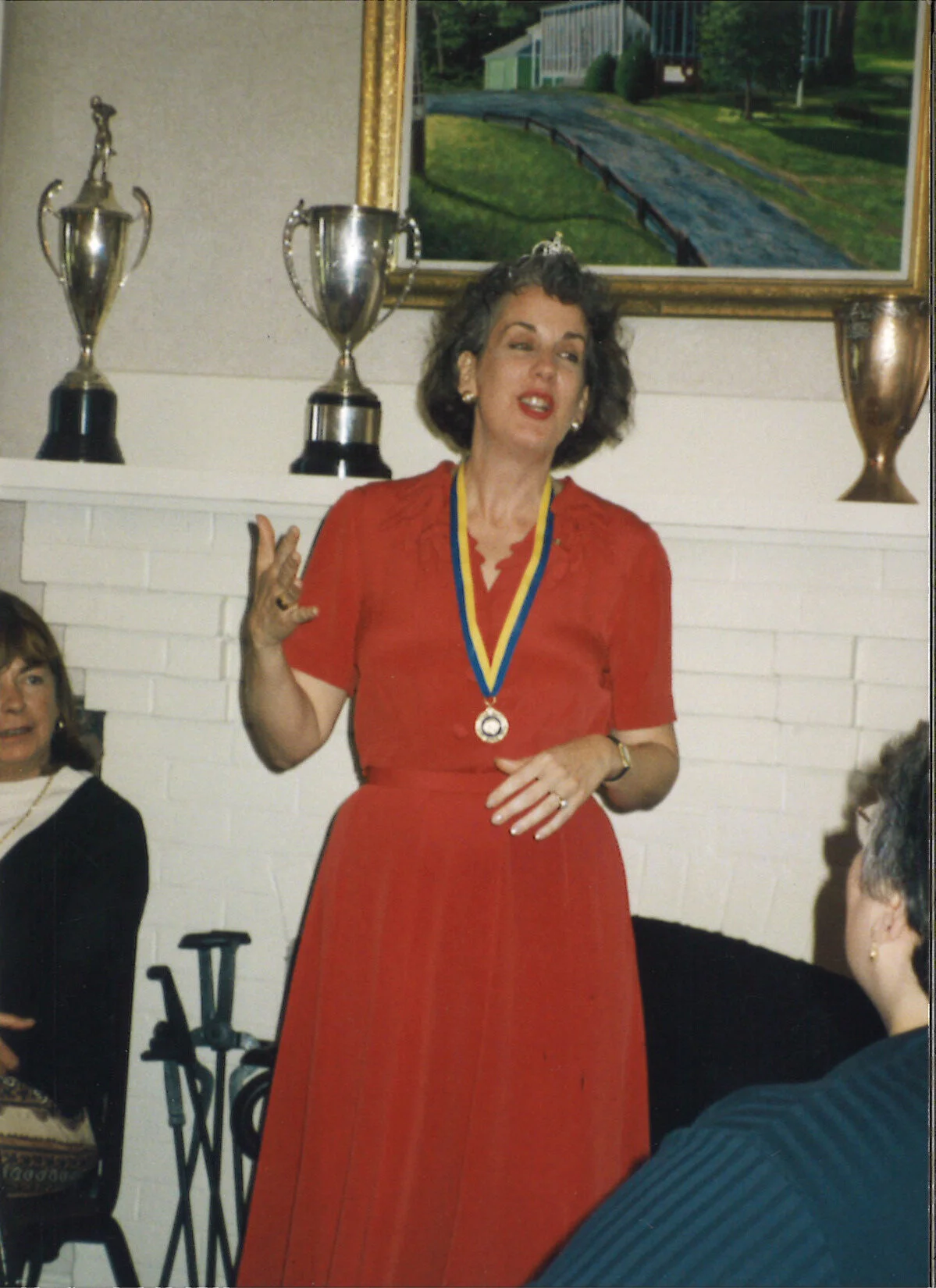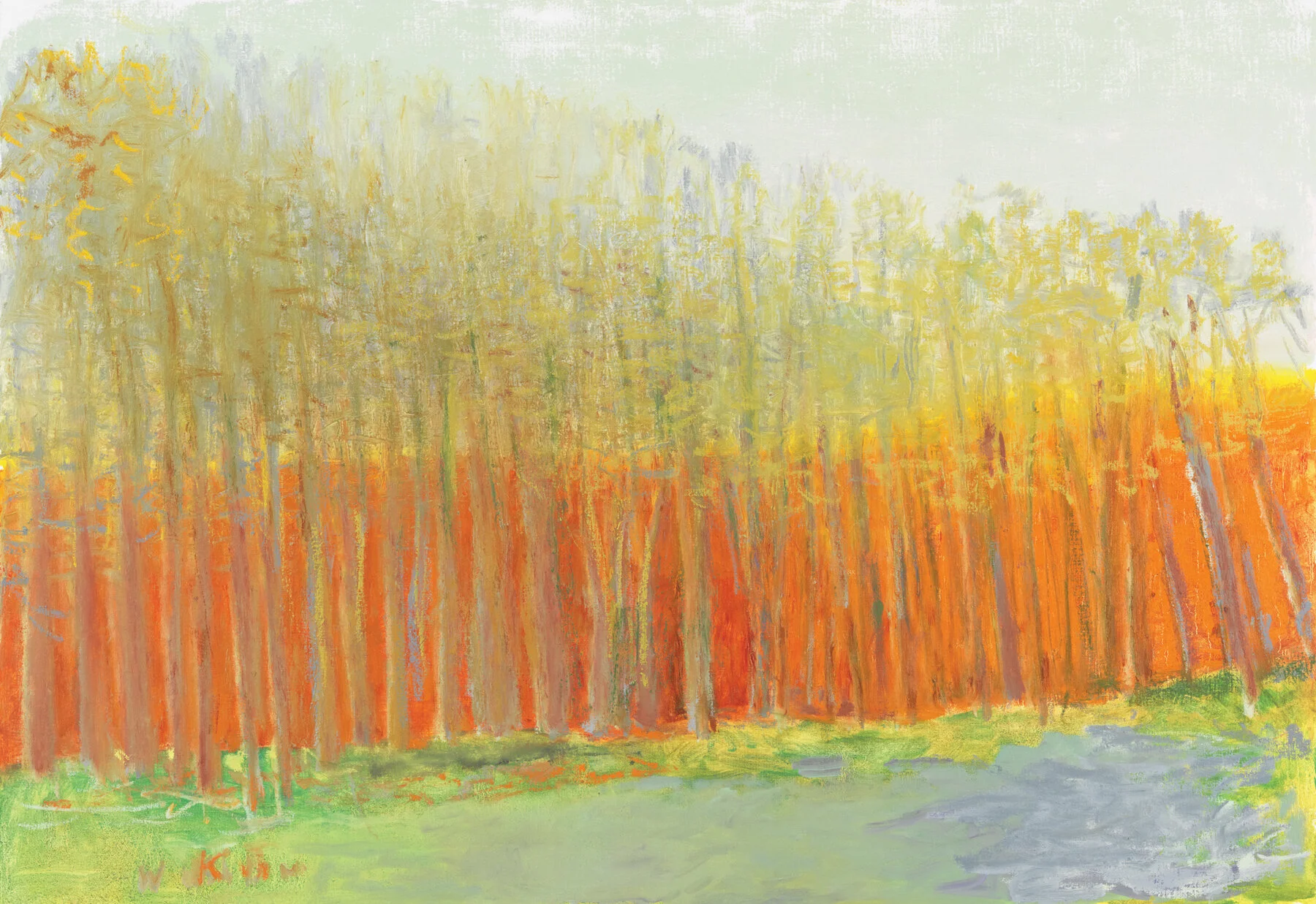Thirty years of art and friendship
Wolf Kahn and Mara Williams look back on the past three decades at BMAC
October 4, 2019, was a significant date for the Brattleboro Museum & Art Center (BMAC) for two reasons: it was both the 92nd birthday of renowned painter and BMAC Honorary Trustee Wolf Kahn and the 30th anniversary of Chief Curator Mara Williams’ first day on the job.
The day before Kahn’s birthday, Williams sat down with Kahn and his wife, artist Emily Mason, for coffee and conversation at their farmhouse table in West Brattleboro, Vermont.
Williams: Wolf, my first recollection of you was 30 years ago this past summer. I was up for my second interview at the Brattleboro Museum & Art Center. I had driven up from New York City that morning. After this long, involved interview with the Board of Trustees, you said, “Well, I think I should take you out for some refreshments.”
First you walked me to the Brattleboro Co-op, so I could meet Emily and see what you called “the best co-op on the East Coast.” And then after that, you took me to Delectable Mountain [a fabric store that billed itself as “an extravagant adventure for natural fiber textile enthusiasts”] and then to our favorite bakery ever, Hamelman’s. You bought me an almond horn with chocolate, because you said they were the best thing they made.
Kahn: They still make those in Brattleboro!
Williams: Right—Amy’s makes them now. And you bought me a cup of coffee to get me back on the road to New York City. That was the start of my friendship with you, and my love affair with Brattleboro, now 30 years old.
Kahn: Earlier that summer, when it came time to discuss candidates at the Board meeting, somebody told me that there was a young woman named Mara Williams who had come highly recommended—from a modeling agency. I said, “Gee, that’s just exactly the kind of background we need at this Museum, because I’m sick and tired of having a museum that’s got no contact with the community.” I figured anyone who ran a modeling agency would have to establish contact with the community. “So I’m in favor of her,” I said.
Williams: That’s true. I put myself through grad school working at a modeling agency, and Donna Borofsky, one of the trustees who hired me, told me later, “You know, Mara, we knew you had a fundraising background, we knew you had an art background and a production background. But what was clear as a bell to us was that you had a sales and a people background—and a people person was what we needed.” So I think I got the job by being gregarious, more than on any other credential that I may have had.
Within a short time, I was up here in Brattleboro, and within a year, I joined the Brattleboro Rotary Club.
Kahn: Yes, and there’s a story about that. I had written an article on Hans Hofmann, who was my teacher, for Art in America. And I guess that article was well received. The editor-in-chief of the magazine said, “What else could you write for us?”
I said, “I have a perfect subject. We have a director at our small-town museum who just joined the Rotary Club and became president in a very short time, because of her people skills. Here she is, the director of this avant-garde art museum, who joined a Rotary Club and now has become the president. So I’d like to write about that.”
The editor-in-chief of Art in America looked up at me and said “What’s a Rotary Club?”
Williams [laughing]: That’s the insular New York art world, I’m afraid.
Wolf, tell me about some of your favorite painting places in and around Brattleboro.
Wolf Kahn, Brattleboro, Seen as a ‘Flugstadt’ (1980), pastel on paper, 11 x 14 inches
Kahn: I liked the Thurber homestead because it was a perfect example of attached architecture, which is typical for New England, with the homestead attached to the barn. It also had a very nice pear tree. So I made about seven paintings of that subject. I kept going back to it.
One time I was by my place and Thurber Senior, quite an elderly man, sitting on a tractor, came by and said, “I say, what would you take for one of them pictures.”
So I said, “Well, I have to think about it.” Next day, his son came by, also on a tractor, and he said, “I want to get one of those pictures for Christmas, for my folks. What would it cost me?”
By that time I’d done my research, and I said, “It would cost you half a heifer.” At that time, half a heifer was worth $375, which for a sidehill farmer was quite a sizeable sum. The two of them were scuffing the sand with their toes, and then they looked at each other and nodded their heads—so I sold a picture for half a heifer.
Another time, I was driving around in the back woods of Putney, and I came upon this marvelous old sort of shack-y house which looked like nobody had done anything to it for the last 50 years. So I knocked on the door and a tall, thin guy in a dirty plaid shirt and a pair of pants held up by one suspender answered. And I asked him, “Can I paint your place?” And he said, “Yes you can, but you must let me see it when you’re done.” I said, “Nothing’s easier.”
So I did it, and when I was finished, I knocked on the door again. He came out and said, “How much would a painting like that cost me if I bought it?”
I said to myself, “Here’s this impoverished farmer—I’d better make it a real low price.” I said, “Seven hundred dollars.” He looked at me severely and he said, “That sum does not scare me in the least.”
It turned out that the guy I was dealing with was Ed Dodd of Dodd, Mead & Company [a well-known publishing company whose works included the books of Agatha Christie], and he really didn’t have to be scared by seven hundred dollars!
Ed had the ambition never to replace anything that needed replacing, except with old stuff. Instead of putting new shingles on, he got old shingles. When he needed to replace an old board on the side of the house, he just found a pile of old lumber and got it from there.
Williams: That’s why he probably had every dime he ever earned!
There are a few other places in the area that appear in your paintings over and over again. Could you tell us about another of those?
Kahn: There’s a bend in the river in Vershire, Vermont, across the river from Lebanon, New Hampshire, where my daughter Melany went with her horse in the summer.
Williams: In the 1990s, you painted that bend in the river in every single season, and then you painted it in a hallucinatory way as well. You had that incredible sheer orange paint that you discovered.
Mason: It was from Gamblin. Transparent Orange.
Williams: Transparent Orange! I call it Wolf Kahn orange.
Kahn: I should be out there painting right now, because the leaves are beginning to turn orange.
Wolf Kahn and Emily Mason
Wolf Kahn and Emily Mason divide their time between West Brattleboro and New York City. They both still work in their studios daily.
Born in Stuttgart, Germany, in 1927, Kahn emigrated to the United States by way of England in 1940. Under the GI Bill, he studied with renowned teacher and Abstract Expressionist painter Hans Hofmann, later becoming Hofmann’s studio assistant. He regularly exhibits at galleries and museums across North America. His work can be found in the collections of The Metropolitan Museum of Art, the Whitney Museum of American Art, The Museum of Modern Art, the Museum of Fine Arts (Boston), the Hirshhorn Museum, and the Los Angeles County Museum of Art.
Kahn and Williams, 2017
As BMAC’s chief curator, Mara Williams is responsible for developing and executing the Museum’s exhibition program, hiring and managing guest curators and essayists, and cultivating and soliciting funds from donors. She served as director of BMAC from 1989 to 1998, during which time she stabilized the finances of the institution and grew the budget, obtaining several multi-year grants from national, regional, and local foundations. She is also principal of Arts Bridge LLC, a consulting firm that specializes in developing viewer-centered exhibitions for institutions throughout New England.












